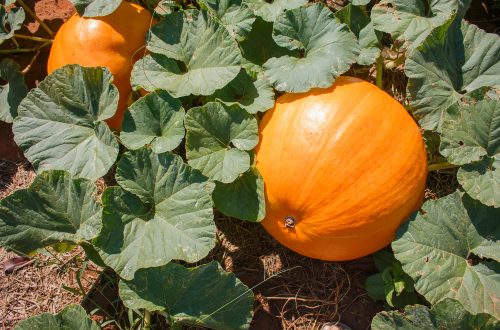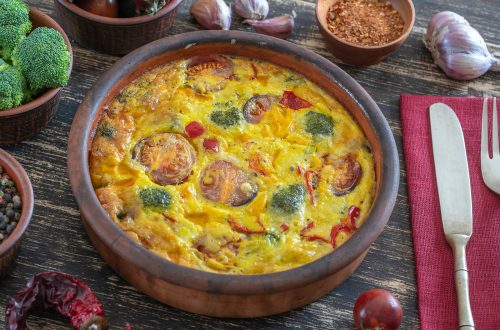
Garlic: The Magic Ingredient
After writing more than 200 blogs, you’d think I would already have featured this key constituent. Garlic is among the most important ingredients in most cuisines around the world. And besides, I love it.
Good and evil
Like many things we take for granted, these ingredients don’t always get our attention. Humans have been consuming garlic for so long that no one is sure where it originated, but it was most likely central or southwestern Asia. One of the oldest documented vegetable crops, garlic was used by the Egyptians as both a flavoring and a medicine. Preserved garlic was found in King Tut’s tomb. When Moses led the Jews out of Egypt, the Bible notes, they missed “fish, the cucumbers and the melons and the leeks and the onions and the garlic.” The Babylonians were using it 4,500 years ago, and the Chinese were growing it 4,000 years ago. And, of course, medieval Europeans believed garlic protected them from the evil eye, not to mention keeping those pesky vampires at bay, so they hung it over their doors.
Subtle and strong
Author and food scientist Kumud Gandhi in The Garlic Story notes that the Crusaders brought garlic to Europe. These days, French chefs use garlic generously in soups, stews, and sauces, but they know how to tame the lingering aroma by including plenty of parsley to counteract the sharpness and odor. They also roast or fry the cloves to use heat and fat to transform the flavor so that it is subtly integrated. Frog legs sautéed in butter and garlic are among the delicacies most closely associated with French cuisine – and perhaps the origin of the once-derogatory term “frogs” that’s now been embraced by the French, according to travel writer John Furlow. In England, on the other hand, garlic was long considered “foreign” or eccentric. In the Victorian age, when French food was the rage, the British started consuming more garlic. That said, in the “upper classes,” garlic breath was deemed offensive, which carried over to the U.S. until the 1940s.
Spain, on the other hand, has been bold in its integration of garlic pungency, whether by rubbing a cut garlic clove over a piece of toast or concocting aioli. And ironically, though we often associate garlic with Italy, it is the Italians who have treated garlic with suspicion: It was associated with poverty in Roman times, where it was used to mask lower-quality ingredients. Elsewhere in Europe, the Scandinavians love to forage wild garlic in the spring for use in omelets or even as an alternative to spinach. In Eastern Europe, think of Chicken Kiev.
We Americans tend to most closely associate garlic with European cuisine. Yet in some 25 countries around the Mediterranean, Gandhi points out, garlic is not only the backbone of cooking; Palestinian tradition believes that if the bridegroom wears a clove of garlic in his buttonhole, he’s assured of a successful wedding night. As for the cuisine, think of hummus, baba ghanoush, and toum sauce. Molokhia, a traditional Arab dish, contains whole bulbs of garlic. Middle Eastern cooks believe it’s important to take your time with garlic, roasting instead of frying and mincing instead of chopping for meats, seafood, and vegetables to lightly perfume the flavors. They typically incorporate a subtle layering of herbs and spices with no ingredient dominating while garlic takes its part.
Bears and tigers
In Asia, Korean folklore tells us that 20 cloves of garlic and a bundle of mugwort could transform a bear into a woman and that eating pickled garlic before passing along a mountain path could protect you from tigers. In modern times, garlic is a key ingredient in most Asian cuisines except for Japan, where it’s believed to inflame the passions. But in China, garlic, ginger, and spring onion are the holy trinity of the aromatic base for many dishes. India’s sofrito consists of garlic, ginger, and onions, but the garlic is sliced and fried to give it a different flavor and texture. Indian dishes use garlic generously, not just in curries, but in dishes such as a Kashmiri garlicky cabbage stir fry.
In Korea, garlic is an essential ingredient in fish and meat dishes, and pickled garlic is enjoyed as a side dish. Thai cuisine sometimes uses whole cloves of garlic in spicy salads as well as in curry pastes.
As for tips on garlic preparation, Gandhi notes that the more you damage the garlic cell walls, the stronger the flavor. Therefore, an intact garlic clove is the mildest, followed by sliced garlic, then minced garlic (although adding salt can mitigate the harshness). When cooking with garlic, add the wetter ingredients such as onions first, as they will release water that will prevent the garlic from burning and tainting the dish.
As for me, I have a couple of garlic-laden favorites: Caesar salad and chicken with 40 garlic cloves. Aside from keeping the vampires away, how do you use your garlic?
From your email, please click on the headline to view the blog on the website. You can log in and comment at the end of the blog to share your thoughts and start a discussion, or suggest a topic for Farmboy in the Kitchen.
If you’d like to share the blog, click on the Facebook icon or one of the others. Thanks!





2 Comments
Tracy May
We use garlic in practically everything! A favorite is tempeh cut into cubes sauteed with a smashed clove of garlic heated on med-hi in EVOO and butter, a little Garam Masala and soy sauce. Another is to roast a whole head in our little clay garlic roaster, then spread the soft buttery contents of the bulbs onto a nice crusty French baguette. Yum.
Farmboy
That should keep the vampires at bay.